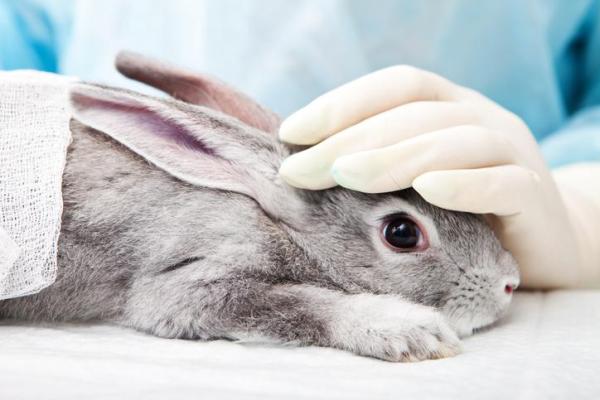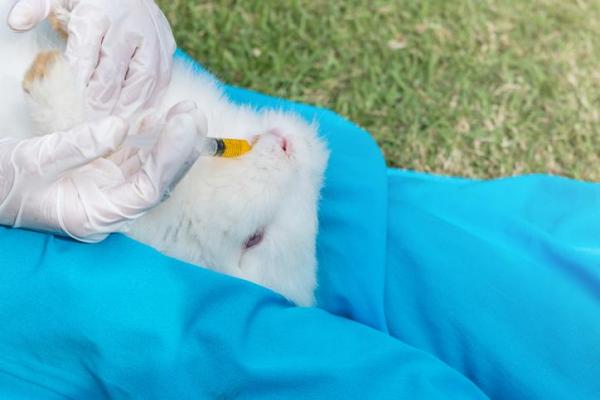Tularemia in Rabbits



See files for Rabbits
Taluremia is a disease which is common in the wilds of Asia, Europe and North America. However, it is fortunately not one which is very common in domestic rabbits. This doesn't mean it is impossible for a rabbit to contract it, however. While uncommon, if a rabbit is infected there is a chance of fatality, especially if it is not treated swiftly. If you read this AnimalWised article on tularemia in rabbits purely for informative reasons, it is useful. If however, your rabbit is unfortunate enough to contract the disease, then knowing its symptoms and treatment may be invaluable. However, another important factor is the fact that this is a communicable disease for humans. If a wild rabbit with this symptoms interacts with you or one of your family, then you may be helping more than your pet.
What is tularemia?
Tularemia is a bacterial disease caused by the bacteria Francisella tulariensis. It can attack lagomorphs and rodents which usually act as carriers. It can then be spread to livestock, domestic pets such as cats and dogs as well as humans. Additionally, it can be transmitted via direct contact with either an infected specimen or its environment. It can also be passed by the intervention of a vector such as ticks, mosquitoes or horseflies.
The bacteria is unfortunately (for us, not the bacteria) very resilient. It can withstand both sub-zero temperatures and even cleaning with bleach. It can survive for weeks or months on end. However, it is more sensitive to more standard household cleaners and detergents as well as sunlight. The most worrying characteristic of tularemia in rabbits is that it can be asymptomatic with the rabbit dying suddenly without prior warning.
How is tularemia in rabbits spread?
Rabbits can contract tularemia when they come in contact with contaminated environments. This is partly because it can be found in soil, vegetation or even in water. Contagion is particularly high if they consume infected food or water. However, tularemia can also be passed on through inhalation if the bacteria is airborne. Most importantly, it can be passed on by being bitten or scratched by a vector.
It will be difficult for a rabbit which lives inside to be infected, but we still need to ensure their protection. For humans, tularemia can be passed on essentially in the same way as rabbits. This means through inhalation, touching environment, consumption of infected material or being bitten by a vector. Wounds which come in contact with infected material can also cause the disease. There is a different sympmology depending on how the disease is transmitted, i.e. if it is conjunctival, respiratory or digestive.

Symptoms of tularemia in rabbits
As we stated above, tularemia in rabbits can often be asymptomatic, meaning it displays no obvious symptoms. This generalized infection can lead to the sudden death of the animal. In milder cases, we might observe the following symptoms:
- Fever
- Weakness
- Lethargy
- Ulcers
- Abscesses
- Behavioral changes
In addition to these symptoms, their overall appearance may be affected. If their coat suddenly starts to look dull and feels drier and/or rougher than usual, it is possibly a symptom of this disease.
In humans, the symptoms may present as:
- Chills
- Muscle and/or joint pain
- Headaches
- Nausea
- Vomiting
Depending on the origin of the infection, different symptoms may present. For example, if the infection was caused by a vector such as an insect bite, you may see necrosis or ulcers at the bite site as well as inflammation of the nearest ganglion. Conversely, if the entry of the infection was respiratory, then pneumonia is possible or if the infection was digestive, it will likely lead to gastrointestinal problems. Individuals who contract tularemia, but who manage to overcome the infection can be immune for many years. However, this doesn't mean a future infection is impossible.
Treatment of tularemia in rabbits
As tularemia is a bacterial disease, treatment for rabbits is most often with antibiotics. A veterinarian must prescribe this drugs after an adequate diagnosis has been confirmed. At the moment, there is no vaccine for tularemia. Since it is a life-threatening pathology, prevention is the best course of action. How this is done can be seen in the succeeding section.
How to prevent tularemia in rabbits
To avoid tularemia in both rabbits and humans, the following guidelines should be observed:
- Avoid contact with animals which we either don't know or which look unwell and potentially infected.
- Keep the rabbits indoors.
- Wash your hands well in general, but particularly when interacting with animals.
- Don't drink water of unknown origin or from the wild.
- Wash fruit and vegetables well.
- Properly cook meat.
- Deworm animals and use repellents to avoid transmission via vectors.
- Use gloves when handling the corpses of animals or animals which have recently been sick.
- Always go to the veterinarian for the rabbit and to the doctor for yourself if you experience suspicious symptoms.
If you want to know more about how to keep your rabbit safe, consult this article on the most common diseases in rabbits. This will help give a general idea of the considerations you need to make to keep the entire family healthy.

This article is purely informative. AnimalWised does not have the authority to prescribe any veterinary treatment or create a diagnosis. We invite you to take your pet to the veterinarian if they are suffering from any condition or pain.
If you want to read similar articles to Tularemia in Rabbits, we recommend you visit our Bacterial diseases category.







